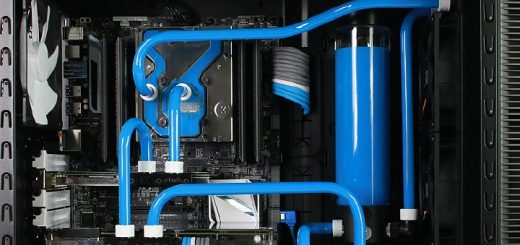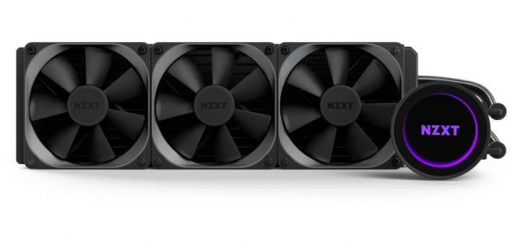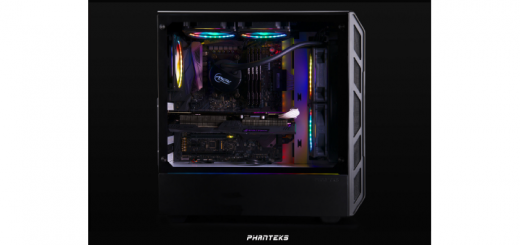
Bottlenecking is the bane of every PC gamer. Most of us have experienced sudden stuttering at crucial moments in our gameplay. A stutter when you are just one hit away from killing a boss can be quite frustrating. It is equally critical in multiplayer games as it can mean the difference between winning and losing. The primary reason for stuttering is a bottleneck between the CPU and the GPU used in the system.
What is a Bottleneck?
A bottleneck is the difference in the processing capabilities of various components of a computer. The difference impacts the overall performance of the computer. If the slowest component of the computer is substituted with a more powerful one, it will boost the overall performance of the computer. Any component in a system including an HDD, GPU, CPU or RAM can be the cause of a bottleneck.
Bottleneck in Gaming
When we are playing a game on a computer, the functions requiring mathematical computations in the game are processed by the CPU while the graphical calculations are handled by the GPU. To simply put, if you instruct your character in a game to move a couple of feet forward, the mathematical computations related to it are performed by the CPU. It determines that the character was at X and Y coordinates and now has to move to X1 and Y1 coordinates. The GPU handles how the movement appears on the screen.
Games are processed in frames, and some of the calculations are performed on a frame by frame basis. The movement of a character from one set of coordinates to another will involve several frames. Some parts of each frame are processed by CPU while others are processed by the GPU. A CPU may also require some information from the GPU while processing a frame and vice-versa. The CPU will have to transfer some of the information to the GPU and also instruct it regarding the operations it must perform.
A CPU is architecturally different from a GPU, and its processing speed will be different from that of a GPU. The current frame will not be displayed unless both the CPU and GPU have performed their respective computations for the frame. In some cases, one of these may process frames at a slower speed than the other creating a bottleneck in the system.
CPU vs GPU bottlenecks – What is the difference?
There can be times when the CPU will already have processed its computations for a frame and will be waiting for the GPU to finish its computations. The CPU will not process the next frame until the GPU completes its processing for the frame. In such a scenario, the GPU is holding back the CPU, and it is known as GPU bottleneck. The performance is said to be GPU bound.
For eg., a CPU may have the capability to process up to 120 frames per second while the GPU used along with that CPU may only be able to deliver up to 70 frames per second in a particular game at a specific resolution. The game will only run at up to 70 frames per second at maximum.
There will also be a few scenarios wherein the GPU completes its share of processing, but the CPU is still performing computations. The GPU won’t be utilized to its full potential while the CPU will be performing at its limit. Such a situation is known as CPU bottleneck, and the performance is said to be CPU bound.
For e.g., if a system has a GPU that can deliver up to 140 frames per second in a particular game, but its CPU is only able to process up to 100 frames at max, the game will not be able to run at more than 100 frames per second unless the CPU is overclocked or updated.
How To Check if Your Computer is CPU Bound Or GPU Bound?

Checking CPU vs GPU Bottleneck Using MSI Afterburner: A GPU Bound Game
Many software packages allow you to monitor the utilization of your CPU and GPU. MSI Afterburner is one such software that can provide information regarding your processor and graphics card utilization. It even presents the information as an overlay for making it visible while the game is running.
If you find the utilization of your graphics card is 95 to 100% while your CPU is being utilized far less, then your game is GPU bound. Most systems are GPU bound to some extent today.
If your processor’s utilization is 95 to 100%, but your graphics card’s utilization is less, then your CPU is bottlenecking your system. It can happen because of two reasons:
- When we pair an entry-level or older CPU with a mid-level card, we may experience CPU bottleneck.
- A few CPU intensive games especially those that belong to MMO or Strategy Builder genres are more dependent on CPUs than GPUs. These games will increase the computation load on CPUs in proportion to the number of players in the game or the size of the map and may cause a CPU bottleneck.
Core-Limited CPU Bottlenecking
Sometimes you may see that your CPU package’s utilization is around 30 to 50% and your GPU utilization is also at similar levels, but the frame rate is still quite low. In such cases, either the game is very badly optimized, or it is designed to utilize only a few cores of the processor.
If you check the individual core usage of the processor, you may find that the utilization of some of its cores is around 95 to 100% while other cores are being used to a less extent. It is because the game’s design doesn’t allow it to use more than a few cores irrespective of the processor being used. It is also a case of CPU bottleneck.
How to Tackle CPU Bottleneck?
Before tackling a CPU bottleneck, it is wise to ensure that the bottleneck is being experienced in multiple titles. Badly optimized games can create bottlenecks in all CPUs to an extent. If the CPU is indeed a bottleneck, you can take one of the following steps to rectify it.
Upgrade the CPU
One of the most obvious solutions for a CPU bottleneck is to upgrade the processor. A more powerful processor will be able to handle games better and utilize your graphics card to its full potential.
Overclock the CPU and RAM
Some users may not want to invest in a new CPU due to budget constraints. A few of them, especially the ones on an older platform, may have to change their motherboard and RAM also due to incompatibility issues. Such users who don’t want to upgrade their current system can consider overclocking their CPU for improving its performance. Overclocking will help to slightly increase the performance of their system depending on their processor. Some processors may have decent overclocking headroom while others may not support overclocking at all. Users can also overclock their RAM for boosting their system’s performance.
Caution is advised while overclocking a processor or RAM as it can shorten their life or void their warranty.
Stop Background Processes
Any other applications running on the computer, such as an internet browser or a media player, will increase the load on the processor. You can close all non-essential background processes while playing a game.
Increase the Resolution
Gamers who are playing at 1080p resolution but have a monitor that can support a higher resolution (1440p or 4K) can consider increasing their resolution. Upping the resolution of the game will increase its dependence on the GPU and utilize it better.
Lower CPU Intensive Game Settings
There are some settings in the game that can stress the processors. A few of these include shadows and draw distances. Lowering these settings can reduce the load on the CPU and minimize the bottleneck to an extent.
How To Tackle GPU Bottleneck?
It is not necessarily a bad thing to have a system that is GPU bound. The only reason to tackle a GPU bound system is if you are unhappy with the framerate. If most of your games are run at framerates that are below your expectations, then you can consider one of the following:
Upgrade Your GPU
Replacing your current GPU with a more powerful one is a sure shot way of increasing the framerates. Choose a GPU depending on the resolution and the framerate that you want to run your games at.
Lower GPU Intensive Settings
You can lower some of the GPU intensive settings in the game’s video or display menu to improve its framerate. Resolution and texture are two prominent settings that can drastically affect the framerate. Tweaking a few settings will increase your framerates without impacting the visual quality significantly.
Overclock The GPU
You can also overclock your GPU just like your CPU. Overclocking a GPU may increase the framerate by five to fifteen frames depending on the GPU and the amount of overclocking applied.
While bottlenecking does occur due to a difference in the processing power of a CPU and GPU, there are many games wherein they are not at fault. Many games are not optimized very well by their developers and can cause bottlenecks in the system. It is best to test out different games for ensuring that the hardware indeed induces the bottleneck.





